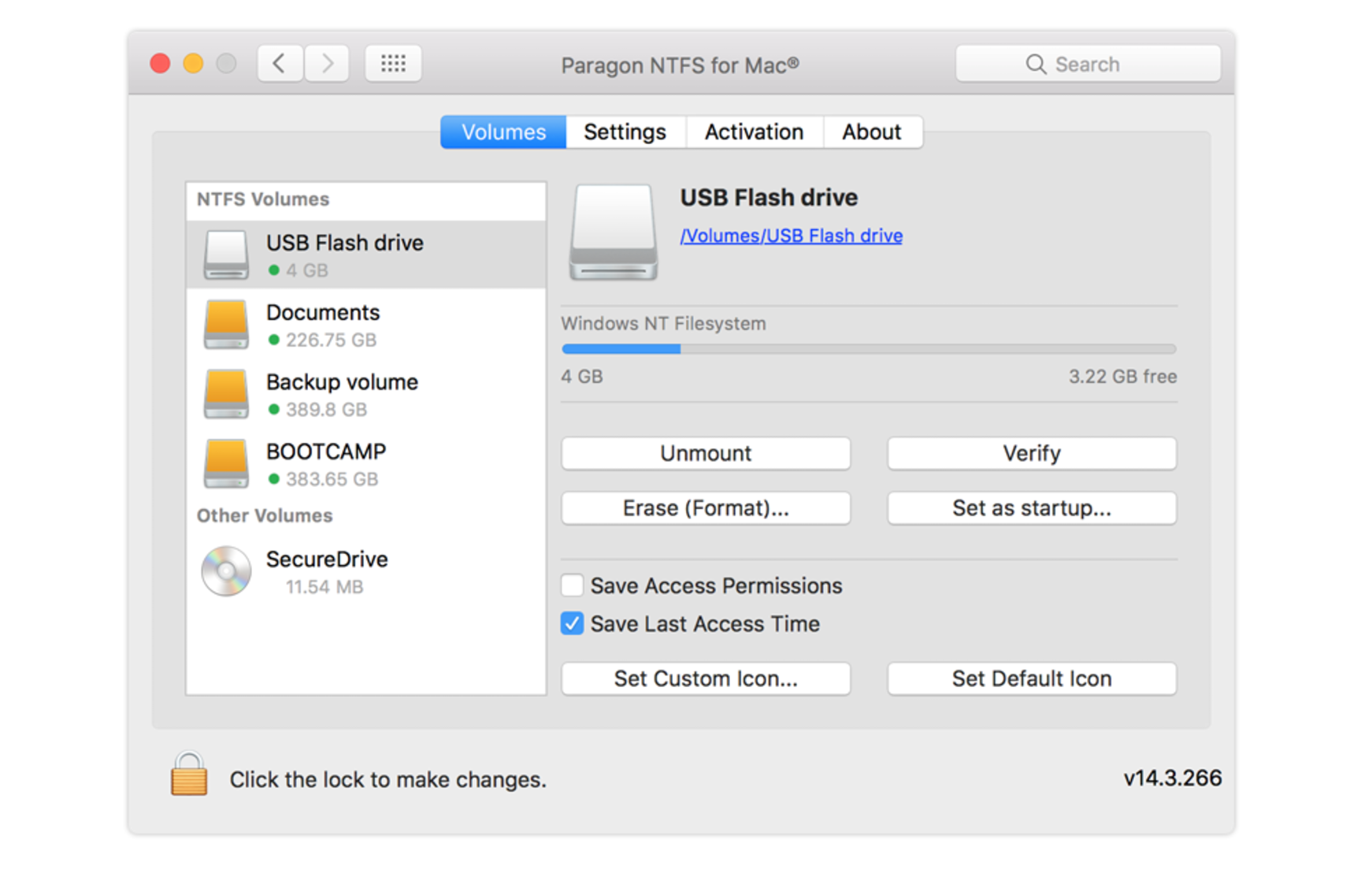

- #FORMAT NTFS ON MAC HOW TO#
- #FORMAT NTFS ON MAC FOR MAC#
- #FORMAT NTFS ON MAC DRIVERS#
- #FORMAT NTFS ON MAC DRIVER#
If you were to reformat a disk to FAT32, the first step you should take is backing your disk up to ensure no data is lost or corrupted.Īnother app you should have on hand is Disk Drill for Mac. The app allows you to schedule backups as you see fit, and can backup your entire system, or limited to the data you want to ensure gets saved. This is one reason backing your Mac up is critical, and why you should have Get Backup Pro.
#FORMAT NTFS ON MAC HOW TO#
Larger files are broken into smaller pieces, and FAT disks need to be told often how to discover those disks. The breaking up of files means FAT disks need to be updated often not doing so is a common reason for file quality loss. This happens because disks formatted as FAT are allocated in clusters depending on their size. Before you change the format of your NTFS files, consider what you have in them.įAT32 isn’t nearly as efficient as NTFS, which can cause data loss for high-quality videos or documents. Your Mac has an app named Disk Utility built into macOS that can help you reformat NTFS files to the FAT32 (file allocation table) format. Below are a few ways you can work with NTFS on your Mac, both native and third party.
#FORMAT NTFS ON MAC FOR MAC#
Others allow you to work with NTFS for Mac free, but free is not always the best option.
#FORMAT NTFS ON MAC DRIVERS#
Some drivers are paid, and can be quite expensive.

Third party drivers and apps are your best bet, and come in several packages.

You can change the filetype to something else, but that can be tedious work! You can also tinker with Terminal and allow yourself writing privileges to NTFS, but that's not always advisable. There are a few things you can do with NTFS files on your Mac beyond reading them. NTFS for Mac: How to Work with Windows Drives in macOS You can read them on your Mac, but that's likely not going to suit your needs.
#FORMAT NTFS ON MAC DRIVER#
When working with NTFS files, you'll need a third party NTFS driver for Mac if you want to work with the files. Many external drives are formatted to NTFS by default, as Windows is more widely used than macOS.īecause it's a proprietary file system Apple hasn't licensed, your Mac can't write to NTFS natively. NTFS stands for NT File System, and was first developed for Windows NT version 3.1, where itw as the default file system for that operating system. In this article, we'll tell you what NTFS is, how you can use it on your Mac, whether there's an NTFS Mac alternative, and discuss the best ways to use the niche filetype on your Mac. The NTFS format isn't one that's widely discussed, so you may be wondering: "what is NTFS format, and why would I use it?" Considering the advantages of security, speed, stability, compatibility and technical support, it is not a bad idea to invest in such an NTFS driver.įor anyone seeking a reliable and budget-friendly Microsoft NTFS read/write software for macOS, the iBoysoft NTFS read/write macOS tool is one of the best choices there is.Get an ever-growing collection of troubleshooting apps.

IBoysoft NTFS for Mac costs less than $20. What struck us most is that the software works in full auto mode and you can't even feel its existence. It performs very fast while transferring files from Mac computers to Microsoft-formatted external drives. We find iBoysoft NTFS for Mac very impressive in our testing. With a price under $20, you can get full access to read and write to Microsoft NTFS volumes on the Mac natively, as well as to transfer files from Windows PC to Mac seamlessly. IBoysoft NTFS for Mac is one of the cheapest NTFS for Mac mounters. Since the introduction of macOS 12 and Apple Silicon M1 chip, most software is yet incompatible with new ARM-based Macs.Among them, iBoysoft NTFS for Mac is the world’s first software to ensure full compatibility with macOS Monterey and Apple Silicon M1 Mac.


 0 kommentar(er)
0 kommentar(er)
